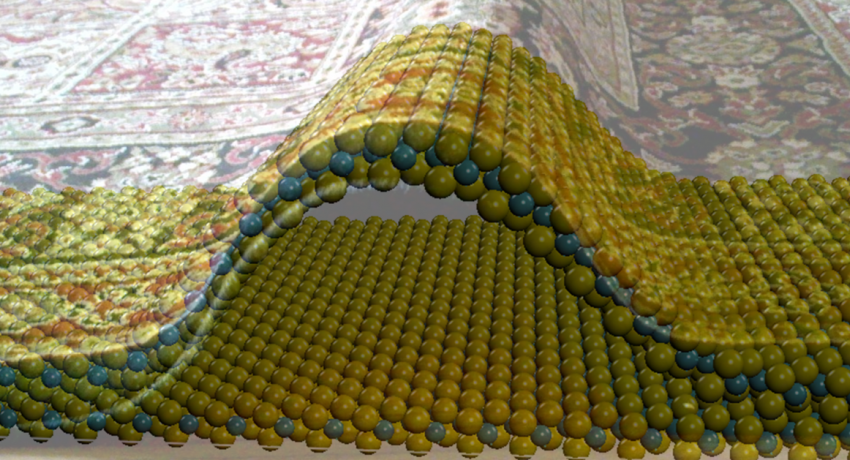What Has Been Achieved:
The new ReaxFF reactive potential developed for this project accurately describes both equilibrium properties and also mechanical deformations and structural defects within MoS2 , a promising material for nanoelectronics. A new type of “ripple” defect has been identified as a favorable host for sulfur vacancy defects.
Importance of Achievement:
Since sulfur vacancy defects have lower energy when they reside within the ripple, it may be possible to transport these defects by transporting the ripple across the 2D layer through controlled mechanical deformations that create a pulse train of propagating ripplocations. Sulfur vacancies degrade the properties of 2D devices, so a means to remove them from key regions of a device may prove useful in the long term. In a broader sense, this new reactive interatomic potential provides a means to model structural fatigue, defect mobility, mechanical response, and other properties of transition metal dichalcogenide systems much more efficiently than is possible with more computationally intensive first-principles methods.
Unique Features of the MIP That Enabled Project:
Tight coupling of cross-disciplinary theory in both first principles and empirical methods.
Can ripples in monolayer sheets “sweep out” unwanted defects? Atomistic rendering of a ripplocation defect within a single MoS2 layer that sits on a lower, flat layer also composed of MoS2. The upper layer has three extra unit cells of material, hence the tendency to buckle upwards in a ripple-shaped defect.
Credits/Names: Ostadhossein, A., Rahnamoun, A., Wang, Y., Zhao, P., Zhang, S., Crespi, V.H. and van Duin, A.C.T. (2017) ReaxFF Reactive Force-Field Study of Molybdenum Disulfide (MoS2). Journal of Physical Chemistry Letters 8, 631–640.
Download PDF Version: Can ripples in monolayer sheets “sweep out” unwanted defects.pdf
Year of Research Highlight: 2017
Select a Highlight Type: In-House Research Highlight
